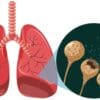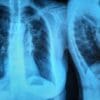Understanding ABPA: Diagnosis, Treatment
What is ABPA?
Allergic Bronchopulmonary Aspergillosis (ABPA) is a hypersensitivity reaction that occurs in some individuals with asthma or cystic fibrosis when their immune system overreacts to the fungus Aspergillus, which commonly inhabits the environment. This condition primarily affects the lungs, leading to inflammation and, if untreated, can result in lung damage.
Diagnosing ABPA
Diagnosing ABPA can be complex due to its symptoms overlapping with those of other respiratory conditions. A healthcare professional typically considers a combination of the following for an accurate diagnosis:
1. Clinical History and Symptoms: Patients often present with symptoms like wheezing, coughing, shortness of breath, and in some cases, brown-colored mucus due to bronchial cast formation.
2. Blood Tests: These are crucial to detect elevated levels of IgE antibodies specific to Aspergillus or eosinophils (a type of white blood cell).
3. Imaging Tests: Chest X-rays or CT scans can reveal lung changes indicative of ABPA, such as bronchiectasis (damaged airways), infiltrates, or mucus plugging.
4. Sputum Examination: Analyzing a sputum sample can help identify the presence of Aspergillus.
5. Skin Testing A skin prick test might be conducted to check for immediate hypersensitivity to Aspergillus antigens.
Treatment of ABPA
The treatment goal for ABPA is to control symptoms and prevent progressive lung damage. The standard treatment protocol includes:
1. Corticosteroids: These are the primary treatment to reduce inflammation, with the dosage tailored to the severity of the condition.
2. Antifungal Medications: Though not always necessary for all patients, these can help reduce the Aspergillus burden in the airways.
3. Bronchodilators: For those with asthma, these can help alleviate bronchial constriction.
4. Regular Monitoring: Continuous assessment by healthcare professionals is vital to adjust treatments and manage exacerbations.
Fitpaa’s Role in Supporting ABPA Patients
While Fitpaa does not replace medical treatment for ABPA, it can play a significant role in supporting individuals with this condition by promoting overall respiratory and metabolic health. Here’s how Fitpaa can assist:
1. Health Monitoring: Fitpaa’s AI-driven Metabolism Monitoring Technology can help users track their overall health metrics, ensuring they maintain optimal body function, which is crucial for managing conditions like ABPA.
2. Personalized Fitpaa Capsule: This includes a tailored combination of medical nutrition, exercise therapy, and cognitive behavior strategies that align with an individual’s specific health goals and lifestyle.
3. Expert Guidance: Fitpaa provides access to a dedicated team of fitness coaches, nutritionists, and doctors who can support users in strengthening their respiratory health and overall well-being.
4. Lifestyle and Dietary Plans: Fitpaa’s metabolic assessment helps create dietary and lifestyle changes that can improve immune resilience and reduce inflammation, crucial for managing allergies and respiratory conditions.
5. Motivation and Support: The Fitpaa app, with its real-time guidance and motivational tools, ensures you stay committed to your health journey, encouraging habits that could mitigate the challenges of living with ABPA.
Conclusion
While managing ABPA requires medical intervention, incorporating a holistic approach to overall health management can enhance quality of life. By downloading the Fitpaa app, you not only gain a personal health and fitness companion but also a comprehensive support system dedicated to helping you achieve your health goals with certainty. Join the Fitpaa family today and transform your well-being with the support you need to breathe easy.









